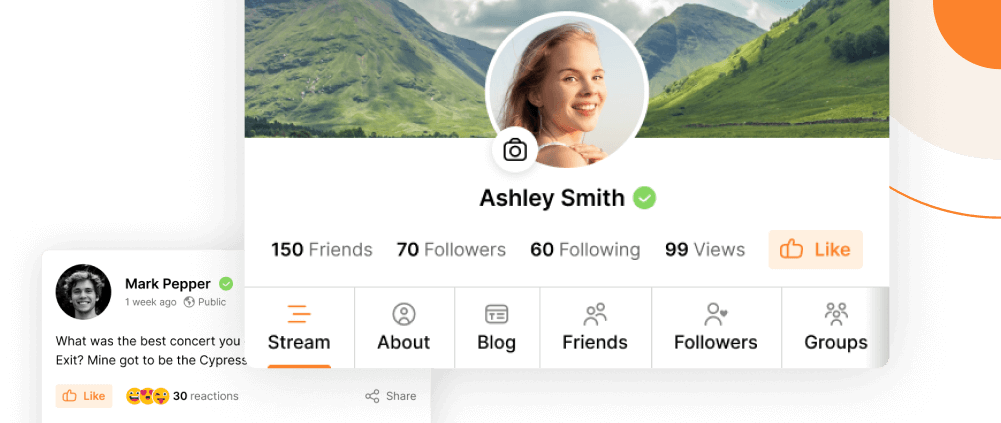Gamification makes participating in your online community fun. Isn’t that why you have it? Your community is serious, you think. You don’t need to devalue it with gamification.
But would you? The better question is why aren’t you using it? Apps do it. Facebook does it. Life does it. Rewarding users is a great way to celebrate the people in your online community.
What is Gamification?
Gamification breaks down desired behaviors and rewards the user as they make progress toward that goal. In a weight loss app, this is related to pounds lost. In a language app, this is broken down by lessons or micro-lessons. Duolingo does this very well. They even remind you that it’s time to learn, German, for example.
Gamification uses game mechanics in a non-game context to reward you for completing tasks.
Lifehacker
Gamification in Apps
Taking ownership for your achievements is a good thing. You don’t have to use an app. But we do. It’s something for us to share online and be proud of. This is especially true for language learning, habit trackers, and productivity. But it isn’t limited to those domains; it happens with actual games like Words with Friends.
Games tap into a wide range of behavioral economics principles and psychological driving forces, such as the importance of ownership, incentives and how they map to growth on a journey, the risks of over-rewarding, and other principles.
Jono Bacon
Gamification in Social Networks
People love collecting stamps, points, and trophies. For some, rewards are a motivator. Facebook has “Top Fan” for Pages and, honestly, I find myself commenting more on those pages to keep that distinction. It seems silly, I know. But look. It works.
Think about how many of us are proud of the badges we have on our WordPress.org profiles. It motivates us to contribute to the WordPress project. In many ways, that’s the larger social network that we all participate in.
If we can reward people for coming together in a way that empowers them to continue connecting for the common good, rather than in a way that shallowly rewards them for taking mostly empty actions in digital spaces, we will be taking a major positive step forward in creating impact and belonging online.
Melissa Jones
Gamification in Life
Gamification works because of the dopamine cycle in our brains. It’s the carrot that motivates us to begin working on our goals. Most achievements in our lives are rewarded this way from stickers on our spelling test to an MBA framed on our office wall.
The education system trains us to chase these badges, ribbons, and points. They exist in all of our primary and foundational years. In adult life, it’s often missing. Or it feels that way.
As we age, rewards come from doing the expected. You don’t get a badge for flossing your teeth. You just don’t get cavities. And, yet, we have habit trackers to reward us. It’s hard for us to see our progress unless we are rewarded — continuously.
Companies who take on this type of reward system, like Zappos, see employee retention rates climb along with productivity.
Gamification in Your Community
We want to encourage users to participate in a positive way that gives value to everyone. It may be rewarding users for coming back or however you choose. Whether it is through badges or points, you have the ability to choose how to use gamification in your PeepSo-powered community.
Any successful online community will use gamification, since it’s successful in creating engagement and participation.
Sarah Robinson-Yu
We have integrations with GamiPress, BadgeOS, and myCRED. Create your community your way. Reward those who contribute value. There’s no reason why you shouldn’t start today.


Reactions & comments
Due to increased security measures, you can now only log-in using your e-mail address.
If you do not remember your e-mail address, send us an email at support@peepso.com
Comments